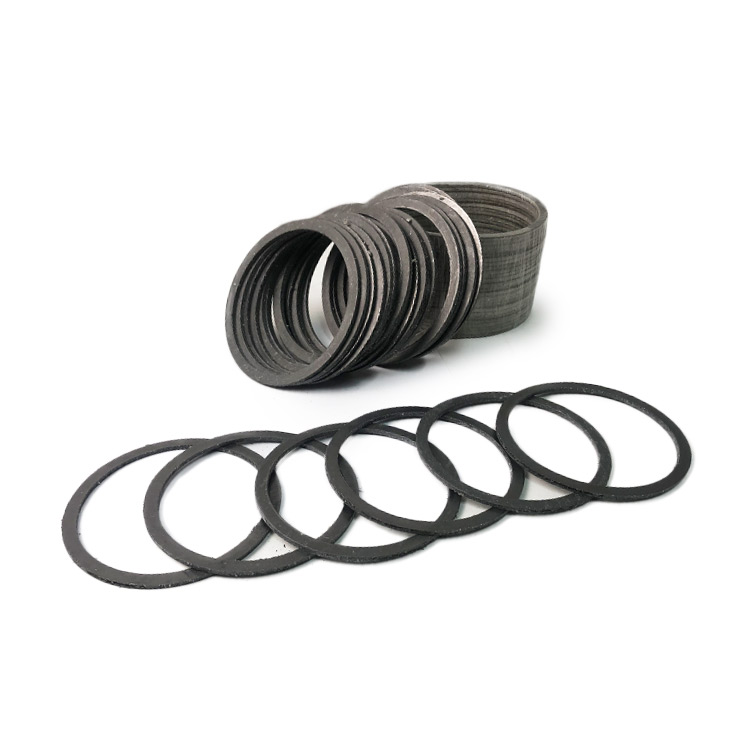By: Veteran Liu, Senior Engineer at Hengshui Hongwo Technology Co., Ltd.
At Hengshui Hongwo Technology Co., Ltd., we’ve been designing and maintaining high-temperature pipeline systems for over 30 years, and one of the most common debates we encounter is: Should you use PTFE (Teflon) or graphite gaskets?
Both materials have their strengths, but the wrong choice can lead to leaks, costly downtime, and even safety hazards. In this article, we’ll break down the key differences, performance parameters, and real-world cost comparisons—so you can make the best decision for your system.
1. Key Differences Between PTFE and Graphite Gaskets
| Property | PTFE Gaskets | Graphite Gaskets |
|---|---|---|
| Max Temperature | 260°C (500°F) | 500°C (932°F) |
| Pressure Resistance | Up to 1500 psi | Up to 3000 psi |
| Chemical Resistance | Excellent (resists almost all chemicals) | Good (but oxidizes in strong acids/oxidizers) |
| Compressibility | High (soft, easy to seal) | Moderate (requires higher bolt load) |
| Creep Resistance | Poor (can cold flow under pressure) | Excellent (maintains seal under load) |
| Cost (per gasket) | 10–50 | 20–100 |
Which One Should You Choose?
- PTFE is better for:
- Low-to-medium temperature (<260°C)
- Highly corrosive environments (acids, solvents)
- Applications requiring easy sealing (low bolt load)
- Graphite is better for:
- High-temperature steam or oil pipelines (>260°C)
- High-pressure systems (3000+ psi)
- Long-term sealing (no cold flow issues)
2. Real-World Cost Comparison: PTFE vs. Graphite

Graphite Gaskets
Case Study #1: Chemical Plant Steam Line Failure
- Problem: A chemical plant used PTFE gaskets in a 300°C steam line, leading to cold flow failure within 6 months.
- Solution: Switched to flexible graphite gaskets—lasted 3+ years with no leaks.
- Cost Impact:
- PTFE replacement cost: $5,000/year (labor + downtime)
- Graphite upgrade cost: 2,000one−time(higherinitialcost,butsaved13,000 over 3 years)
Case Study #2: Oil Refinery Acid Line Leak
- Problem: A refinery used graphite gaskets in a hydrochloric acid line, leading to oxidation failure.
- Solution: Switched to PTFE-lined gaskets—no corrosion after 5+ years.
- Cost Impact:
- Graphite replacement cost: $8,000/year (due to frequent leaks)
- PTFE solution cost: 3,500one−time(saved36,500 over 5 years)
Our Verdict:
- If temperature is the main concern → Graphite wins.
- If chemical resistance is critical → PTFE wins.
3. Common Mistakes When Choosing Gaskets
Mistake #1: Using PTFE in High-Temp Steam Lines
- Why it fails: PTFE degrades above 260°C, leading to blowouts.
- Our Fix: Use graphite or PTFE-coated metal gaskets for steam applications.
Mistake #2: Using Graphite in Strong Oxidizers
- Why it fails: Graphite oxidizes in nitric acid, chlorine, etc.
- Our Fix: PTFE or PTFE-enveloped gaskets are the best choice.
Mistake #3: Ignoring Bolt Load Requirements
- PTFE needs lower torque → Great for fragile flanges.
- Graphite needs higher torque → Can warp weak flanges if over-tightened.
4. Our Recommendation at Hengshui Hongwo Technology Co., Ltd.
After decades of testing, here’s our gasket selection flowchart:
- Is temperature >260°C? → Graphite
- Is chemical resistance critical? → PTFE
- Need long-term sealing? → Graphite
- Need easy installation? → PTFE
Final Thought:
- ”Cheap gaskets cost more in the long run.”
- ”The right gasket saves downtime, energy, and safety risks.”
Need help choosing? Hengshui Hongwo Technology Co., Ltd. offers free gasket consultation—contact us today!
 Hongwo Sealing Gasket
Hongwo Sealing Gasket



WhatsApp
Scan the QR Code to start a WhatsApp chat with us.